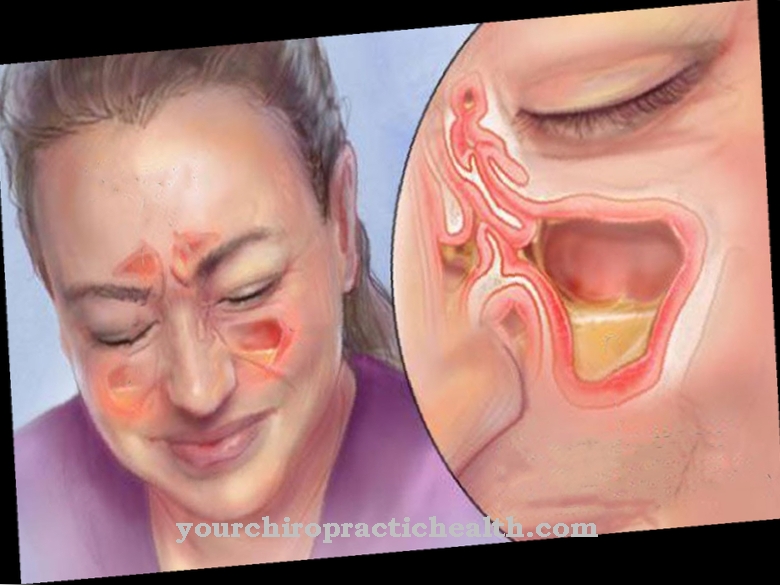The Vaginal flora is the natural colonization of germs in the vagina. It maintains the vaginal environment and plays a role in defense against pathogens.
What is the vaginal flora?
Compared to the intestinal flora, the vaginal flora is manageable. It is determined by two large groups of bacteria, Bacteroides and Lactobacillus. The pH of the flora is <4.5 in the acidic range. In the event of illness, the milieu can shift and assume neutral to basic values.
This enables pathogens to settle in the vagina. An unbalanced vaginal flora promotes vaginal infections and often leads to vaginal dryness, itching, burning, discharge or a fishy vaginal odor. Often these symptoms are treated with excessive intimate hygiene. However, this procedure permanently destroys the vaginal flora and thus makes the symptoms even worse.
Anatomy & structure
The vaginal flora consists of obligatory and facultative germs. The obligatory germs are representatives of the normal flora of the vagina. Bacteroides and lactobacilli belong to the obligatory germs. The normal range of lactobacilli is 10⁴ to 10⁷ CFU per gram of vaginal secretion. Lactobacilli are able to produce short-chain fatty acids, peroxides and various bacteriocins.
Although the Bacteroides are part of colonization resistance, there are no known factors that would suggest that they take on an important protective function in the vaginal tract.
In a healthy vaginal tract, the so-called facultative germs only appear temporarily. Facultative germs enter the vagina, for example, from the intestines or the urethra. The optional germs of the vaginal flora include: [[Enterococci], E.coli, other enterobacteria, streptococci, staphylococci, Gardnerella, Candida albicans, other fungi and yeasts.
However, the composition of the vaginal flora changes again and again in the course of life. When the level of estrogen is high, the sugar content in the vagina increases, so that the lactobacilli find optimal living conditions. Before puberty, the vaginal flora is similar to the normal skin flora.
This is also due to the fact that the ovaries do not yet produce any estrogen, meaning that the lactobacilli cannot find food in the vagina. Lactic acid bacteria only settle when estrogen production begins. The composition of the vaginal flora also changes during the monthly hormonal fluctuations in a woman's cycle. The lactobacilli multiply particularly strongly in the follicular phase. The follicular phase is the first half of the cycle.
After menopause, the vaginal flora changes again due to the drop in estrogen. The vaginal flora then resembles the skin flora again.
Function & tasks
The main task of the vaginal flora is to protect against pathogens. The healthy vaginal mucosa is densely populated with lactobacilli and Bacteroides. These act as a kind of placeholder, blocking the habitat for the potentially pathogenic germs.
Most pathogens also prefer a neutral or basic environment. In the vagina, however, the environment is acidic with a pH value below 4. Most germs do not settle under acidic conditions. The lactobacilli are responsible for maintaining the acidic environment. A special form of lactobacilli, the Döderlein rods (Lactobacillus acidophilus), process the flaked epithelial cells of the vagina into lactate. Lactate is lactic acid. But the bacteria from the group of lactobacilli can not only produce lactic acid, they also produce bacteriocidal substances that are directed against the pathogenic germs.
In this sense, the vaginal lining acts as a mechanical barrier. But it is also an important part of the immune system and is closely related to the immune defense of the intestine, with the so-called gut associated lymphoid tissue (GALT).
The secretory immunoglobulin A can also be detected on the mucous membranes. However, it is still unclear exactly what function the immunoglobulin takes on in the vagina.
Diseases
The vaginal flora can be negatively influenced by many factors. Like many intimate care products, shower gel and bath products have a pH value that is far too high for the female genital area. Cleaning agents with disinfecting properties are also not suitable for cleaning the vagina. They do not differentiate between physiological and pathological germs and thus damage the flora as a whole.
The main cause of infections in the intimate area are chlorinated swimming pools. Chlorine is very aggressive and damages the vaginal environment. Tampons, sanitary towels and panty liners are also usually bleached with chlorine. They also contain other fragrances and perfumes, which can also damage the vaginal flora.
Another common source of infection is wiping after a bowel movement. Women who wipe the anus from back to front run the risk of smearing bacteria from the stool towards the vagina. Intestinal bacteria can also be carried into the vagina during various sexual practices. The unprotected switch from anal to vaginal intercourse is a particular risk.
Immunological disorders such as stress, a disturbed intestinal flora or immunosuppression from drugs also weaken the natural vaginal flora. The same is true for oral contraceptives, diabetes mellitus, local contraceptives, and antibiotic or antifungal therapies. Vaginal dysbiosis can cause various ailments and diseases. A common disease that is caused by incorrect colonization of the vagina is unspecific colpitis. It manifests itself through symptoms such as itching, redness or thin discharge with a fish-like odor. The inguinal lymph nodes are rarely swollen.
However, the consequences of long-term dysbiosis can also be more drastic. For example, with vaginal dysbiosis, fertility decreases. Miscarriages are also more common. Vaginal dysbioses are treated with antibiotics and flora-building preparations.
























.jpg)



